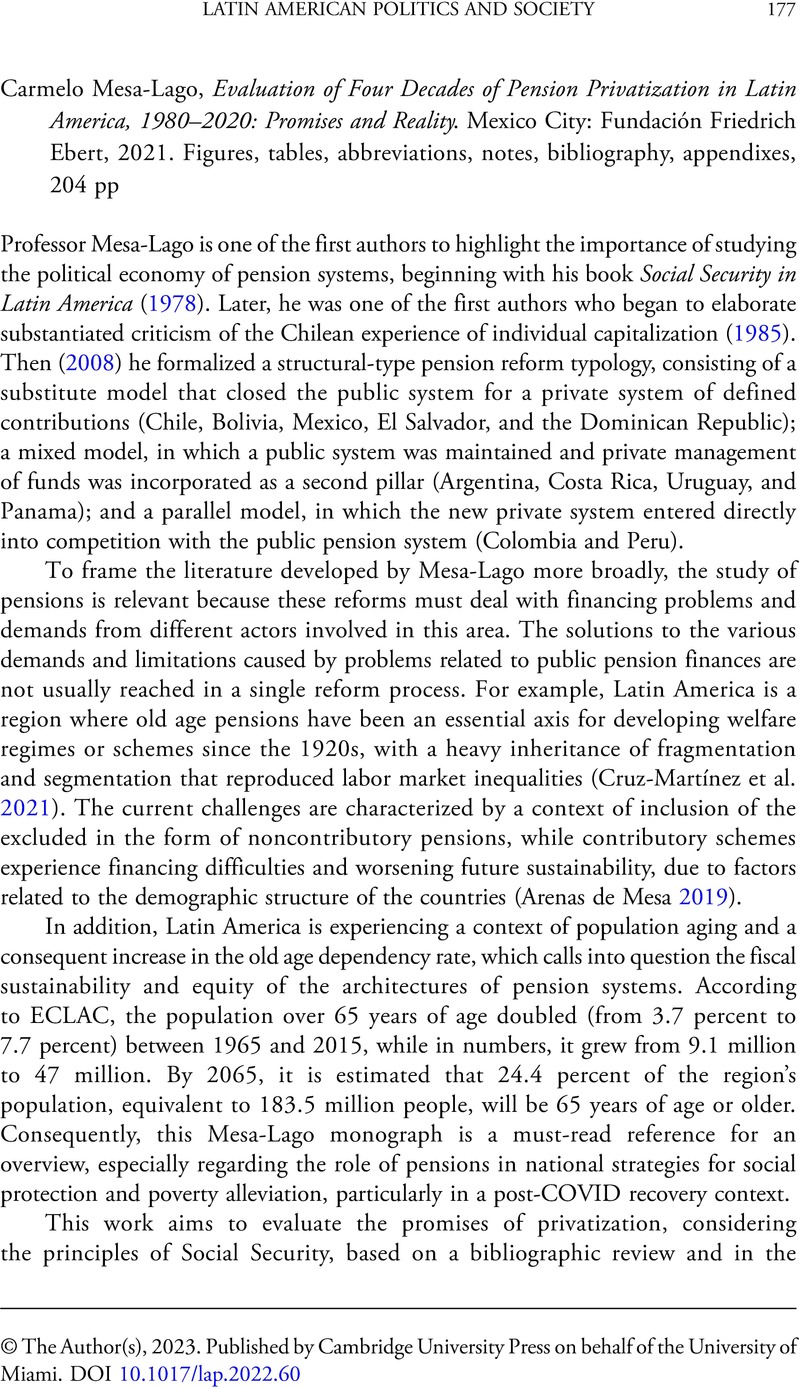No CrossRef data available.
Article contents
Carmelo Mesa-Lago, Evaluation of Four Decades of Pension Privatization in Latin America, 1980–2020: Promises and Reality. Mexico City: Fundación Friedrich Ebert, 2021. Figures, tables, abbreviations, notes, bibliography, appendixes, 204 pp
Review products
Carmelo Mesa-Lago, Evaluation of Four Decades of Pension Privatization in Latin America, 1980–2020: Promises and Reality. Mexico City: Fundación Friedrich Ebert, 2021. Figures, tables, abbreviations, notes, bibliography, appendixes, 204 pp
Published online by Cambridge University Press: 10 January 2023
Abstract
An abstract is not available for this content so a preview has been provided. Please use the Get access link above for information on how to access this content.

- Type
- Book Review
- Information
- Copyright
- © The Author(s), 2023. Published by Cambridge University Press on behalf of the University of Miami
References
Arenas de Mesa, Alberto. 2019. Los sistemas de pensiones en la encrucijada: desafíos para la sostenibilidad en América Latina. Santiago: Comisión Económica para América Latina y el Caribe (CEPAL).Google Scholar
Barr, Nicholas, and Diamond, Peter. 2010. Pension Reform: A Short Guide. Oxford: Oxford University Press.Google Scholar
Cruz-Martínez, Gibrán, Vargas Faulbaum, Luis, and Leyer, Ricardo Velázquez. 2021. Social Security and Pension Systems: The Deep Stratification of Latin American Societies. In Latin American Social Policy Developments in the Twenty-First Century, ed. Sátyro, Natália, del Pino, Eloísa, and Midaglia, Carmen. New York: Palgrave Macmillan. 163–94.CrossRefGoogle Scholar
Mesa-Lago, Carmelo. 1978. Social Security in Latin America: Pressure Groups, Stratification, and Inequality. Pittsburgh: University of Pittsburgh Press.Google Scholar
Mesa-Lago, Carmelo. 1985. El desarrollo de la seguridad social en América Latina. Santiago de Chile: Comisión Económica para América Latina y el Caribe (CEPAL).Google Scholar
Mesa-Lago, Carmelo. 2008. Reassembling Social Security: A Survey of Pensions and Health Care Reforms in Latin America. Oxford: Oxford University Press.Google Scholar


